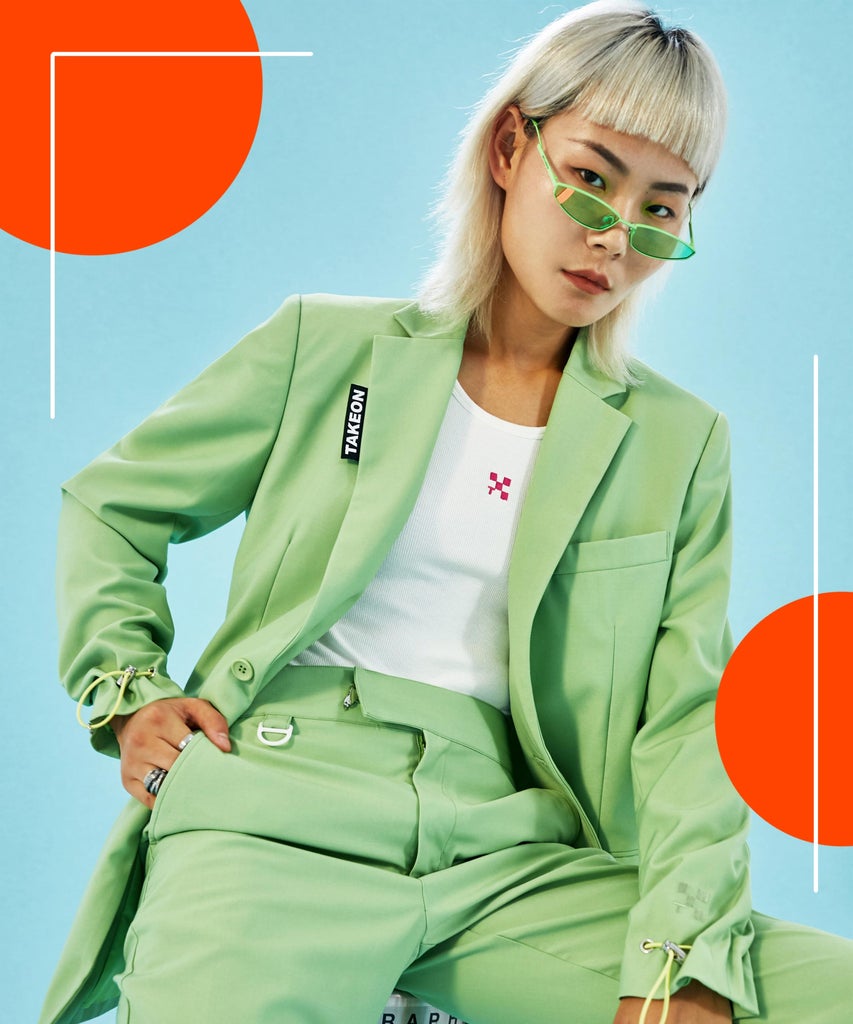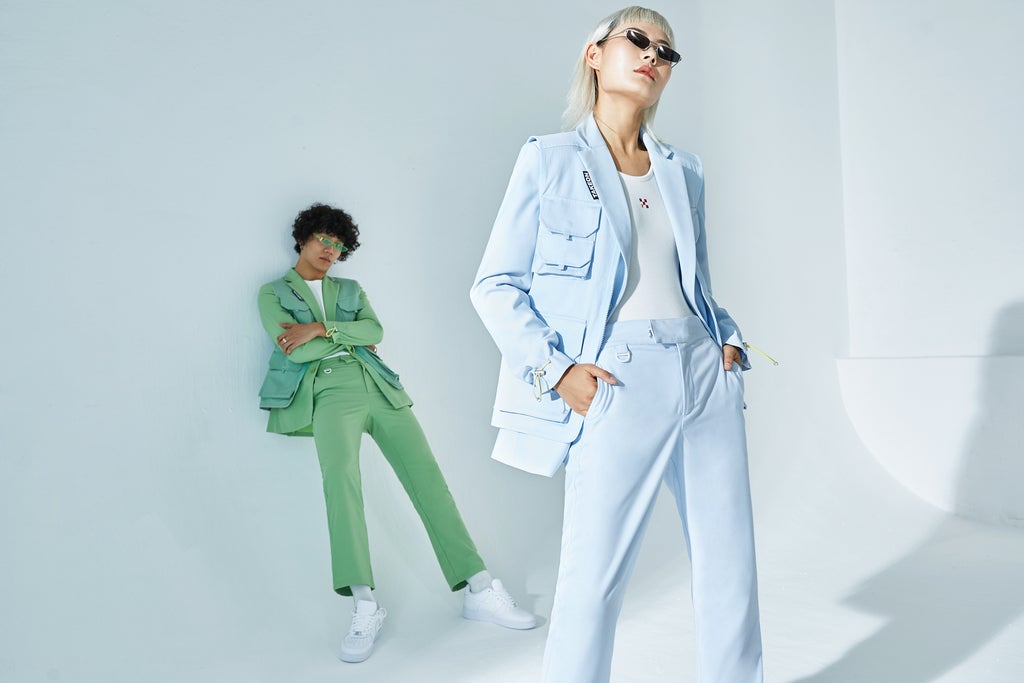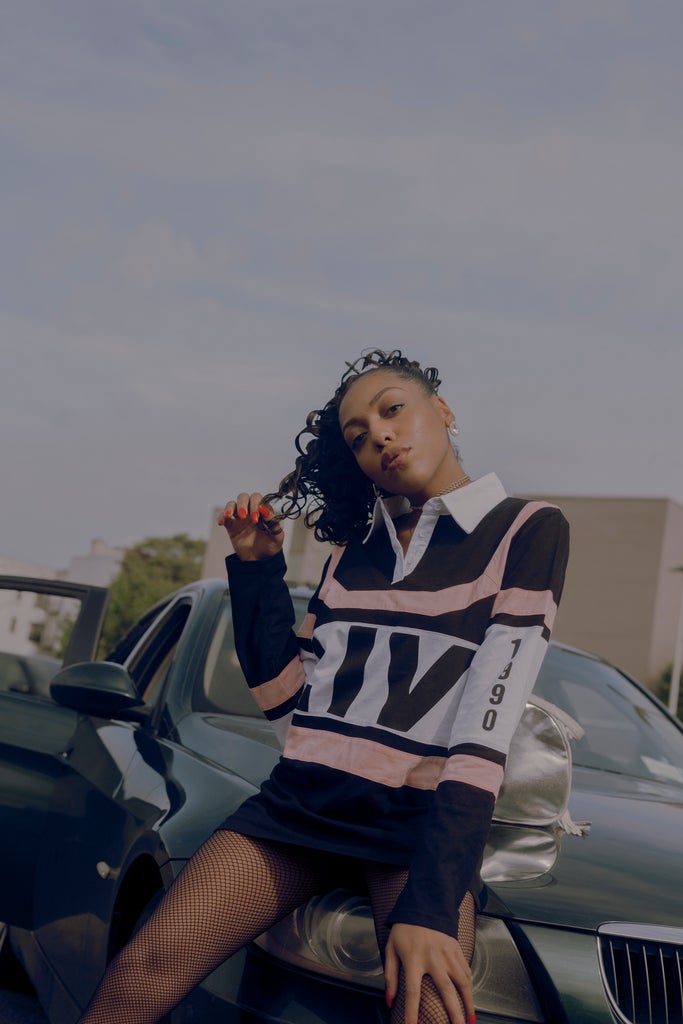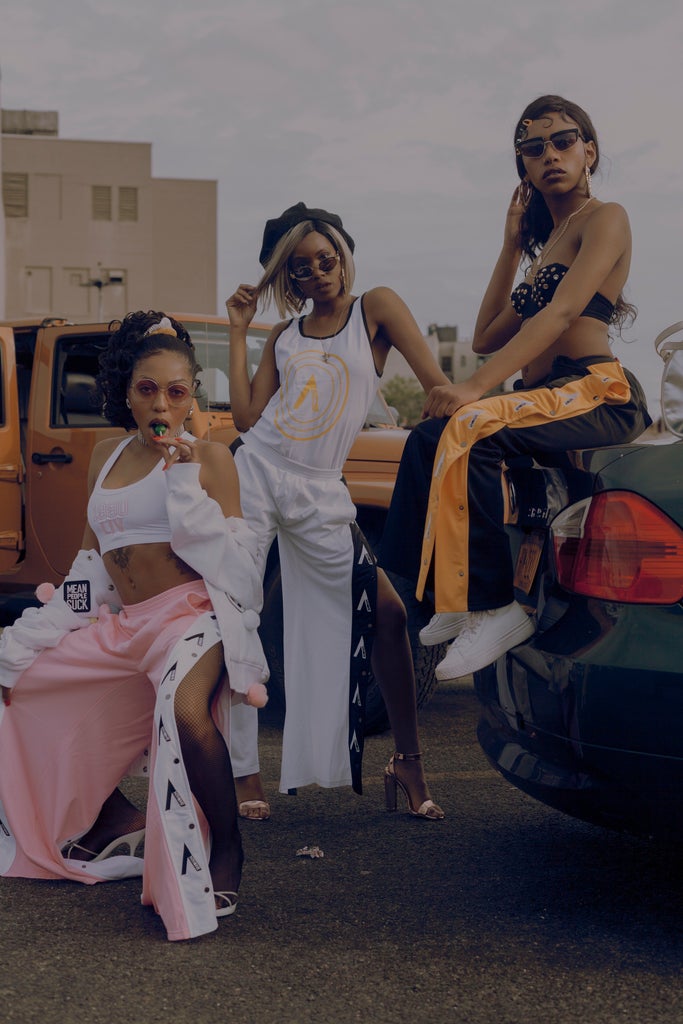
Streetwear, a clothing style with ties to skate, surf, and hip-hop cultures from the ‘80s and ‘90s, has traditionally been a market that caters almost entirely to men. Over the last decade, though, that has been changing. “Slowly more and more women have started wearing men’s styles, and because of this demand, streetwear brands also started developing women’s collections,” says designer Daniëlle Cathari. “But a really big part of the streetwear industry continues to be focused on men. Therefore a lot of the people working in the industry are men.”
It’s true: Stüssy, Supreme, Off-White, Noah, Aimé Leon Dore, and more brands at the forefront of streetwear today have men at the helm. Men are, too, in charge at Bape, Yeezy, HUF, The Hundreds, and Palace. Streetwear is also primarily written about by men, with publications like High Snobiety and Hypebeast, among others, having male editors-in-chief.
But female designers like Cathari, Chelsea Ma of up-and-coming streetwear brand TAKEON, Olivia Anthony of LIV Streetwear, and more are disrupting the streetwear space, once and for all.
Ma, who founded TAKEON in 2018 with fellow streetwear enthusiast Jessica Zhou, didn’t go into design with streetwear in mind. As a woman whose personal style was geared toward the streetwear aesthetic though, it didn’t take long for her to realize just how deficient the industry was in options for women. “I noticed that there were things missing,” Ma says. “All the streetwear brands that I was looking at were run by men, for men. Women just had to adapt.”

Back then, if women wanted to buy streetwear, according to Ma, their options were limited at best. “There was no choice but to buy a T-shirt that was oversized with the neckline being too big, and shoes that you had to size down because Jordans hardly come in women’s sizes,” says Ma. “Why aren’t there more shoe sizes for girls? Why aren’t there more tailored options for girls and guys? Why aren’t there more women-run streetwear brands that are accessible to everyone?”
“It’s definitely something that we need to change,” Anthony says of sneaker culture, in particular, being geared toward men. “A friend of mine came up with Common Ace, a website that helps women find sneakers in their shoe sizes.” The retailer’s about page sums up the issue well: “For too long, women have spent an excessive amount of time searching the web to source sneakers from individual e-commerce sites, only to be greeted with a limited variety of options and lackluster user experience.” The site is a one-stop-shop for women on the lookout for hard-to-find sneakers. “It’s sad that you have to have a platform just for that,” Anthony says. “It should be a given.”
It is this gap in the market that led many female designers to create lines geared toward them. “Growing up, I loved to mix tracksuits and started mixing that boy-ish feel of streetwear with more classical pieces to avoid losing my femininity and shape,” says Cathari who, in 2017, presented a collection of refurbished Adidas tracksuits whilst still in her third year of design school. “I just couldn’t find the right items, so I decided to work on making them myself.”
This new wave of designers is also responsible for creating unisex streetwear rather than female-only designs. “Streetwear can seem like a boys club at times,” Ma says. “We wanted to make TAKEON accessible and approachable by everyone, regardless of gender. We wanted to change and adapt for the future ahead,” Ma says.
“My brand is a fluid brand,” Anthony says of LIV Streetwear. “I don’t even want to put a cap on anything. It’s for everybody.” When conceptualizing her brand, Anthony avoided labels entirely, granting her customers the freedom to buy and wear what she creates in their own unique way. “It’s more of a personality than anything relating to gender,” she explains. “We as a population are constantly evolving, so to have a brand that’s evolving with it is a great feeling.”


For TAKEON, the decision to design unisex clothing meant ideating a completely new style of streetwear. “Both men and women want functionality and tailoring,” Ma says, adding that it’s rare to find either in streetwear. To remedy that, she began experimenting with suiting that was still casual and cool like the streetwear she grew up with, but modernized. “Women want a blazer set that doesn’t have to be so dressy that can match with your sneakers,” she says. “Streetwear doesn’t always have to stay within the boundaries of what we know — it’s ever-evolving and changing.”
Even with the inherent gender bias in streetwear, Chelsea Ma, Daniële Cathari, and Olivia Anthony felt strongly enough about the style to focus their entire lives around it — and, in turn, on changing it. Also spearheading the female-led streetwear space is Sofia Prantera, who alongside her business partner Fergus Purcell, co-founded the cult-favorite brand Aries. Rather than allowing her brand to live in the one-dimensional world of modern streetwear, Prantera’s model for Aries allows it to sell out at both luxury retailers like Matches Fashion and under-the-radar streetwear sites like VRENTS. There is also Melody Ehsani, an Iranian designer who made history when she became the first woman to design a pair of Jordans; MISBHV founder Natalia Maczek, who is, in large part, responsible for bringing streetwear to Poland; Mowalola Ogunlesiesi, the British-Nigerian designer who Kanye West recently tapped for the role of head designer for his new Yeezy Gap line; and Ashley Williams, whose return to London Fashion Week last season after a brief hiatus was one of the most-anticipated shows of the season.
The list of female designers in the small world of streetwear is growing at a fast rate and, from it, a new normal in streetwear — one where style and personality influence the culture, not gender.
Like what you see? How about some more R29 goodness, right here?
Kanye West’s Yeezy Is Coming To Gap
Liv Streetwear Is For The Culture, By The Culture
Virgil Abloh Says Streetweer Is Over
0 comments:
Post a Comment